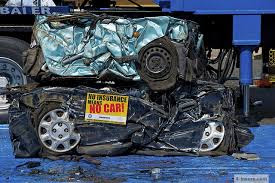Auto Insurance - Uninsured and Underinsured Motorist Coverage - What is Uninsured Motorist coverage? Well, it tends to be self-explanatory to some degree. Very simply, if the at-fault driver is uninsured and causes injury and damage to you, your Uninsured Motorist coverage - known as UM - will take the place of the at-fault driver's financial responsibility and pay your claim. Again, that's the simple definition. There is much, much more to the rules, conditions and exclusions of the coverage.
Uninsured Motorist coverage affects two categories - one is Bodily Injury (UMBI) and the other is Property Damage (UMPD). Let's discuss UMBI first. Your policy limits for UMBI will be the applicable limits for you and those family members considered first party insureds per your policy definitions. The applicable limits for others in your vehicle who sustain injury in this situation would be the state's minimum required limits for BI. So, if you were in a state that had minimum limits of 15/30 for Bodily Injury but you had UMBI limits on your policy of 30/60, these higher limits would only apply to first party insureds (read your policy definitions!) and all others in your vehicle who sustained injury in an accident caused by an uninsured motorist would only have the 15/30 - regardless of the severity of their injuries. Make sense?
UMPD is for the damage to your vehicle caused by the uninsured motorist. This is a separate coverage so don't think that if you opted for the UMBI that you get both. Typically, if you have Collision coverage, you cannot have UMPD but may opt for Collision Deductible Waiver, which will pay the deductible in regard to an accident with an identifiable uninsured motorist. Same outcome. People who don't have Collision will usually take the UMPD, which may carry a stated amount as maximum that will be paid out under the coverage.
"Identifiable" brings up some important points - requirements for UMPD to be used:
1) Your vehicle must have direct contact with the uninsured vehicle
2) The owner or the operator of the uninsured vehicle must be identified, or
3) The other vehicle must be indentified by its license plate number
Now that you have some understanding of what UM is, there is also UIM - which is Underinsured Motorist coverage. This is part of your UM and only applies to the bodily injury part of the coverage. If you are severely injured and the at-fault party only has, say 15/30 Bodily Injury coverage (for which you are only entitled to $15,000), and your UMBI coverage is 50/100, there is an additional $35,000 available to you to satisfy your claim (the underlying $15,000 is subtracted).
UM Coverage is simple on the one hand but complicated in that there are many definitions, conditions, and exclusions that apply. The coverage is designed to prevent the non-fault parties from financial loss when hit by an uninsured party but has safeguards to prevent abuse.
Finley Keller has spent nearly 30 years in the insurance industry, beginning as a licensed agent with a CLU then moving into claims. Auto, homeowner, worker's comp and other liability-only type policy claims. Casualty and material damage. Her last ten years were spent in SIU (Special Investigative Unit), working with fraud detection. The last four years she was manager of SIU, responsible for working fraud cases and the training of employees in compliance with state regulations as related to fraud. She is a retired member of NCFIA, Northern California Fraud Investigators Association. She has a Senior Claims Law Associate (SCLA) designation through the American Educational Institute, Inc. She writes about insurance in an effort to educate and assist people in understanding the basics and key principles of insurance. Please visit The Insurance Detangle.

